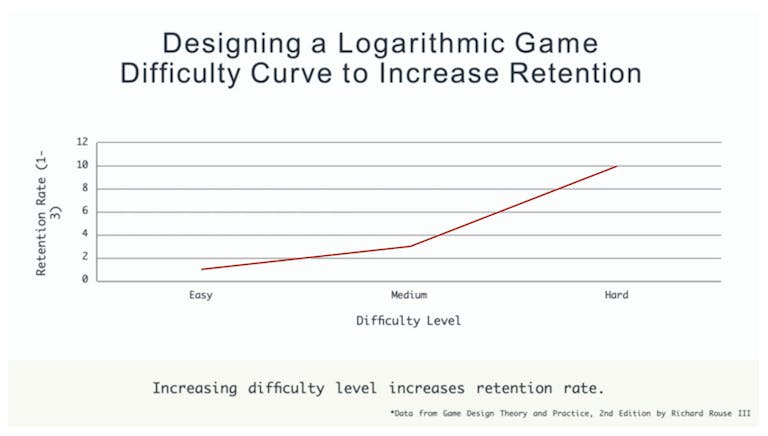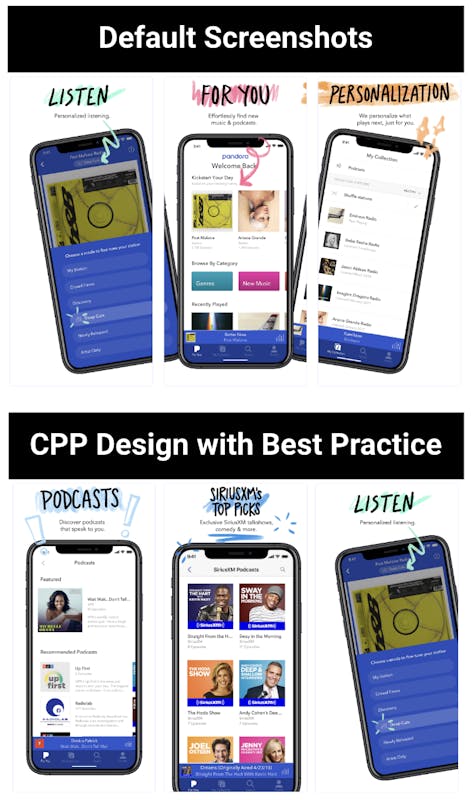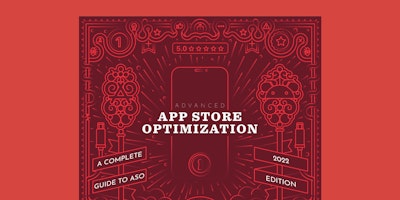
5 Tips & Insights to Grow Your App
On Thursday, March 30th, our team from AppTweak had a wonderful time attending the App Growth Summit in New York. We also hosted an ASO and Growth Breakfast in partnership with Addict Mobile on Friday, March 31st. The events provided a great opportunity for networking, exchanging ideas, and gaining insights into the latest trends in the app industry.
In this blog, we will share key takeaways from these events in the shape of 5 tips to grow your app.

Tip #1: Enhance your mobile app onboarding experience
Ken Vermille, Founder and CEO at Vermillion Sky, a mobile app agency for startups.
- Your app’s mobile onboarding experience is critical to ensuring user engagement and retention. A successful onboarding process involves introducing your application, showcasing features, and making sure that users solve the problem they downloaded your app for. The importance of effective onboarding cannot be overemphasized, as 25% of apps get used only once before being abandoned.
There are common pitfalls in onboarding, such as:
- Failing to show the app’s benefits and value proposition
- Overwhelming users with too much information
- Not having a great UI/UX
A good onboarding experience ensures that users get from download to value as quickly as possible, with real-life examples and clear, concise instructions.
Citing an example, Rover – an app that allows people to book services for their pets – needed improvement in their onboarding process. The app’s onboarding process began with setting up a profile, setting up a pet’s profile, and then sending users to their profile page. However, users who download the app are looking for someone to watch their pets, so they want to immediately be shown that there are people available to do this. Rover needed to fix their onboarding process by orienting users from the moment they open the app and asking them what they need. The app should shorten the distance between the problem and the solution by showing users the people in their area who can watch their pets immediately. After they choose someone, they can then set up their profile and pet’s profile.
- When it comes to enhancing the onboarding experience of a game, you should consider the immediate difficulty of your gameplay. It’s ideal to encourage good player engagement in the very beginning of your game. A good strategy to hook your users is to reward your players early on. Your users don’t want to be stuck in a game tutorial that feels like work, so make the game interactive and fun immediately, even throughout the tutorial.
- It’s also ideal to reward customers consistently and frequently in the beginning levels, which should be set at a very easy difficulty level. As you reward users, they will begin to crave more rewards. Only after the point where a user will feel hooked on your game should the difficulty level be increased, developed via a logarithmic curve. As the difficulty level is increased, the rewards earned will be spaced out, which encourages users to keep playing your game.
Check out these useful tips for mobile app retention and maximize your app revenue

- To improve your mobile onboarding experience, prioritize your primary value proposition, simplify the process to no more than five to seven steps, and use real-life examples. You can also test the process to identify potential issues and make necessary adjustments. An excellent onboarding experience or process increases your revenue and reduces app abandonment. It’s important to keep in mind that people download your app to solve a problem, so your onboarding process should focus on addressing their pain points quickly and efficiently.
Tip #2: Pay attention to the market with a full-scope lens
Benjamin Burgess, Sr. App Growth Manager at Life360, a location-sharing app, and Taya Franchville, App Growth Consultant at AppTweak.

- When optimizing your app’s metadata, it’s very important to continuously check your market for competitor updates – A/B tests, ASO guideline updates, etc. – but viral moments often fly under the radar. Viral moments are organic changes in user activity that can provide opportunities for app developers to gain exposure and grow their user base. To keep your app effective and fresh, it’s key to view the market in a full scope. Often, ASO is viewed under a microscope, with primary focuses on recurring metadata updates and creative refreshes, but a vital strategy is to also zoom out and look at the full picture regularly.
- Life360 noticed a viral trend when their competitor Zenly was sunsetting their app. Their ASO team noticed that users were searching the App Store for “zenly,” seeking a replacement app, so Life360 capitalized on the opportunity by creating an ASA-led custom product page (CPP) with a design that resembled the competitor’s app. This strategy resulted in significant growth in their global markets.
Another example of viral trend monitoring from Life360 was when their app saw a spike in downloads in the Philippines. After some initial research by their ASO team, it was discovered that there had been an increase in kidnappings in the Philippines, and people were downloading Life360 as a safety measure. Life360 was not, at the time, focused on tracking for safety, but instead for convenience. The team quickly pivoted to highlight the safety features of their app and saw success in the market.
These examples showcase the importance of paying attention to market trends and being aware of the competitive landscape. It’s crucial to stay up to date with industry news and keep an eye on the app stores to identify opportunities to grow your app. Analyzing viral moments and paying attention to market trends and competition can provide valuable opportunities for app developers. By being aware of what’s happening in the industry and implementing strategies to capitalize on these trends, app developers can improve their user acquisition and retention, ultimately leading to the success of their app.
Tip #3: Advance your paywall optimization tactics
Nicolas Tissier, CEO at Purchasely, an in-app subscription platform.
Optimizing the in-app paywall can be a challenge for app marketers, especially when it comes to user retention and engagement. According to a survey, 55% of respondents consider user retention and engagement the biggest challenge for app marketers. To grow a subscription business, app marketers should focus on optimizing user experience. Almost 80% of daily active users are lost during the first 3 days. Optimizing your paywall is a critical component of the user experience, since almost 70% of users skip it after less than 10 seconds.

- The first stage of paywall optimization is the install-to-paywall display. To optimize the number of paywalls viewed, expose users to the paywall as soon as possible. For example, Kidly, an app for kids in Turkey, put the paywall immediately after the onboarding screens. This led to an increase in the number of paywalls viewed by a significant margin.
- The next focus point is the conversion-to-trial. To optimize the conversion rate, app marketers need to build trust with users, as only 15% of new installs convert to free trials. This low conversion rate can be due to subscription fear, where users are afraid of being charged for a product they don’t like. To build trust, it’s best to be clear with your users about the purchase timeline. The family-planning app, Just A Baby, ran an A/B test with two paywall variants and found that the option which outlined a clear timeline, rather than listing benefits, was the clear winner.

- To further build trust, some apps offer a second-chance offer, similar to abandoned carts in e-commerce. The app detects when users click on the button to subscribe but doesn’t follow through and triggers a second-chance offer, which includes a discount. You can also provide a countdown on the second-chance offer in order to create a sense of urgency in the user that they must move quickly or risk missing out. For example, Fretello, a guitar lesson app from Austria, and Share(d), a family-planning app, increased their free trials on average by 19% by adding second-chance offers.
The trial-started-to-paid stage is crucial, since 60% of retention drops come from free trial users who do not convert to paid subscribers. To optimize this stage, app marketers need to convince users to stick with the product and become loyal paid subscribers. One effective strategy is to offer a seven-day free trial and remind users that they will only be charged on day seven. This strategy was used by a German audio book app called Blinkist and increased conversion-to-trial by 23% and conversion-to-paid by 5%.
Optimizing the in-app paywall requires app marketers to focus on metrics and insights. By building trust with users, providing a second-chance offer, and enhancing urgency, app marketers can optimize the conversion rate and increase the number of paid subscribers. The key is to pay attention to the user experience and optimize each stage of the acquisition funnel.
Tip #4: Focus on obtaining customer loyalty for your app
Dan Sterling, Sr Director of Sales at Optimove, a relationship marketing SaaS.
One of the biggest challenges facing companies today is reducing churn and adapting to customer segments. The solution to this challenge lies in customer-led marketing, which focuses on putting the customer first and using their data to guide everything a company does with its campaigns. By doing this, companies can build stronger relationships with their customers and increase their chances of retaining them for life.
Customer-led marketing involves leveraging the vast amounts of data that companies have at their disposal. This means not just analyzing what worked after a campaign, but using insights early on in the process to guide decisions about what the customer wants. This approach requires companies to start with the customer, rather than the product, channel, or message. Customers provide data on their preferences, the products they’re interested in, the channels they want to be reached on, and the timing of their interactions. By using this data, companies can create better segmentation and micro-segmentation, which allows them to run more targeted and personalized campaigns.
A roadblock that app marketers face is accessing the data they need to run effective campaigns. Often, they have to go to IT teams to get the data they need and wait for insights to come back from another team. This process can be slow and inefficient, and can hinder a company’s ability to iterate and pivot quickly. To overcome this challenge, marketers should have the data they need at their fingertips. They need to be able to access customer preferences and segmentation data in one place and be able to use it to guide their campaigns.

One company that has successfully implemented customer led marketing is John Hardy, a high-end jewelry brand. John Hardy wanted to create a more personalized touch with their customers but didn’t know how to do it at scale. By working with a customer-led marketing platform, John Hardy was able to access their customer data in real-time, including information on product preferences, birthdays, and anniversaries. This allowed the company to create targeted campaigns that resonated with their customers and increased retention rates.
Customer-led marketing is a powerful strategy that can help companies build customer loyalty and improve retention rates. By putting the customer first and using their data to guide decision-making, companies can create targeted and personalized campaigns that resonate with their customers. By doing this, companies can increase their chances of retaining their customers for life and building long-term relationships that are mutually beneficial.
Tip #5: Leverage ASO best practices when creating CPPs
Manuel Pacreau, Deputy CEO at Addict Mobile, and Taya Franchville’s presentation at AppTweak and Addict Mobile’s ASO and Growth Breakfast.

Custom product pages (CPPs) and App Store Optimization (ASO) are two essential aspects of mobile app marketing.
CPPs are created to provide a tailored and seamless user experience. When combined with ASO best practices and user acquisition (UA) efforts, CPPs can have a significant impact on the success of an app.
Expert Tip
Use CPPs in Apple Search Ads to see a huge difference in your conversion rates. Data from our ASO Trends & Benchmarks Report reveals that games enjoy an 8% increase in conversion rates with CPPs, with apps showing a notable increase of 2.7% in both impressions-to-installs (ITI) and tap-through-rate (TTR).
- When creating a CPP, you should first identify segments that are most likely to yield high returns. Internal user research can be a great starting point for this. Additionally, data partners can help by providing user data that can be used to identify and assess the size of a particular segment. ASO tools like AppTweak can provide valuable insights, such as keyword search volumes, key topics, and sentiment analyses from app reviews and ratings.
- When developing a user acquisition strategy, consider where CPPs can bring an advantage. For example, CPPs can be incorporated into Apple Search Ads, social media campaigns, email marketing, and SMS campaigns. Sharing your marketing strategies with your ASO team can be beneficial, as they have knowledge from A/B tests and experience in screenshot revamps, which can be used to develop effective CPP strategies. With this in mind, ASO teams can work alongside other teams to create robust marketing and acquisition plans that include CPP strategies. This can save time for teams who don’t have, or have limited, ASO experience.
- When developing your user flow, it is important to consider what users are experiencing. It’s best for a user to see what they are expecting throughout the process, without a break in their experience. For example, let’s dig into a campaign that Pandora ran on Meta.

If this had been a use case for a CPP, Pandora’s marketing team could have shared the campaign copy and creatives, after which the ASO team could have informed them of best practices, strategies, and competitor insights.

Above, you can see the original screenshots for Pandora, and an example of a CPP that could be built, which includes a best practice: showing the user what they’re expecting to see, specifically, the same imagery from the campaign.
Following ASO best practices and store guidelines when designing your CPPs is a key component of successful CPP campaigns. Incorporating this into your Apple Search Ads and marketing campaigns is an excellent way to enhance and optimize your UA strategies.
TL;DR
The App Growth Summit at New York and the ASO and Growth Breakfast provided some really interesting tips and insights to grow your app:
- Your app’s onboarding experience is extremely important for your user retention. To improve your mobile onboarding experience, prioritize your primary value proposition, simplify the process to no more than five to seven steps, and use real-life examples. In addition, when developing a mobile game, consider using a logarithmic curve to develop your difficulty per level in order to hook users and keep them engaged.
- Expand your scope. While it’s important to continuously check your market for competitor updates, A/B tests, ASO guideline updates, etc., don’t forget to keep an eye out for viral moments, which often fly under the radar. ASO is frequently viewed under a microscope, with primary focuses on recurring metadata updates and creative refreshes, but a vital strategy is to also zoom out and look at the full picture regularly.
- Only 15% of new installs convert to free trials. This low conversion rate can be due to subscription fear, where users are afraid of being charged for a product they don’t like. Optimizing your paywall is a critical component of the user experience since around 70% of users skip it after less than 10 seconds. Consider tactics like second-chance offers, and treat your customers with consideration.
- One of the biggest challenges facing companies today is reducing churn and adapting to customer segments. Through focusing on customer-led marketing, companies can put their customers first. By using customer data to guide decision-making, companies should create targeted and personalized campaigns that resonate with their customers.
- When developing your user flow, it is important to consider what users are experiencing. It’s best for a user to see what they are expecting throughout the process, without a break in their experience. Custom product pages (CPPs) are a fantastic way to increase conversion, as users are shown exactly what they’re looking for when moving from point A to point Z. Following ASO best practices and store guidelines when designing your CPPs can enhance and optimize your UA strategies.



 Oriane Ineza
Oriane Ineza

 Alexandra De Clerck
Alexandra De Clerck

 Micah Motta
Micah Motta